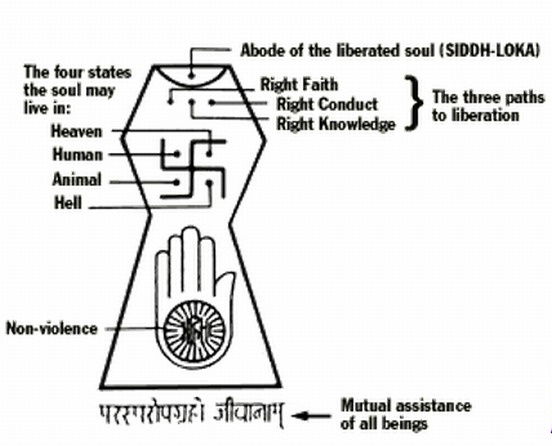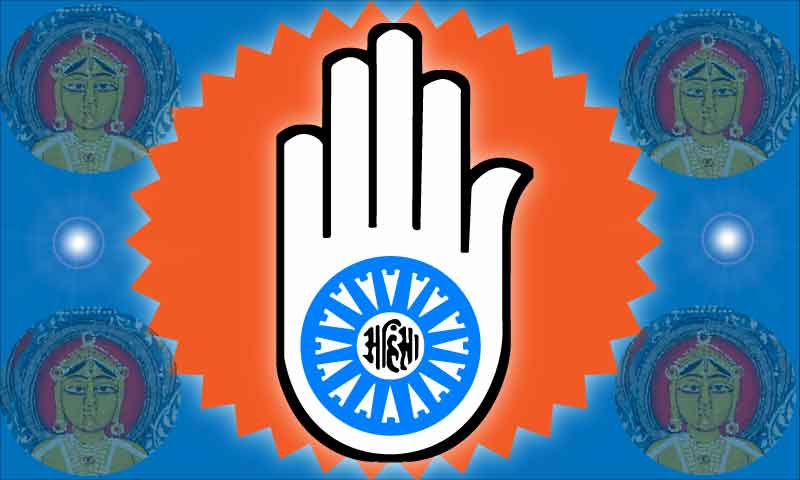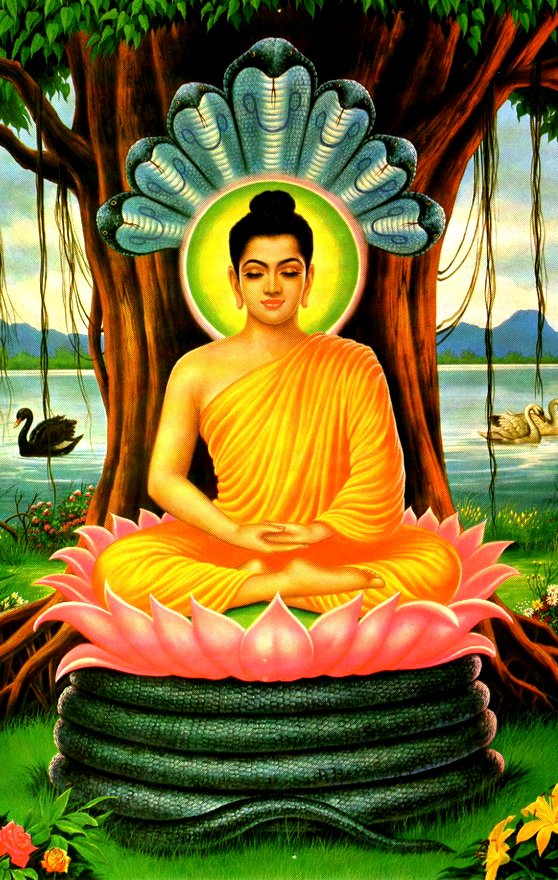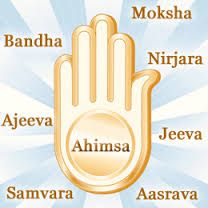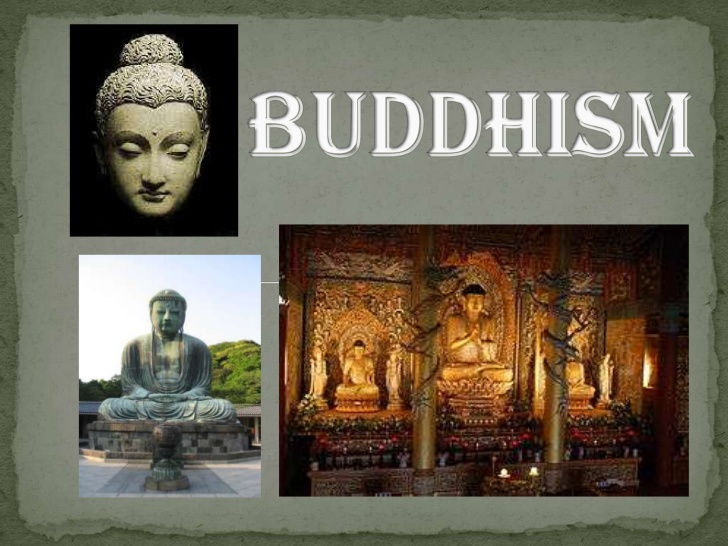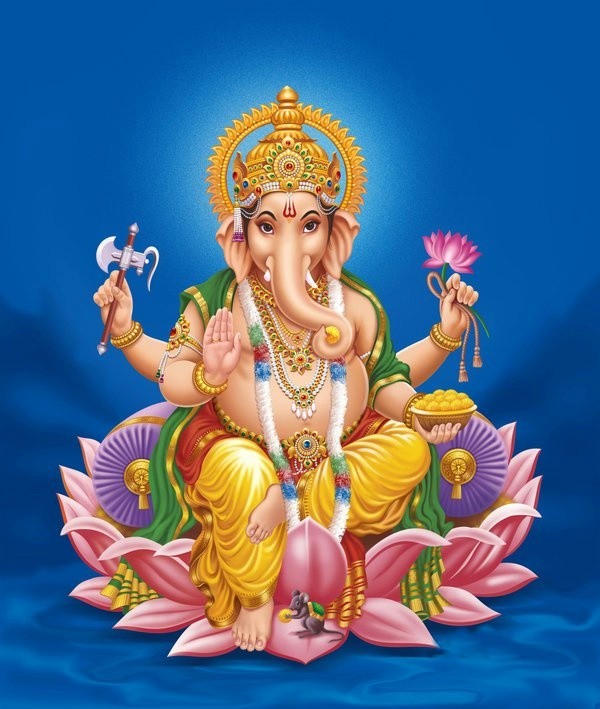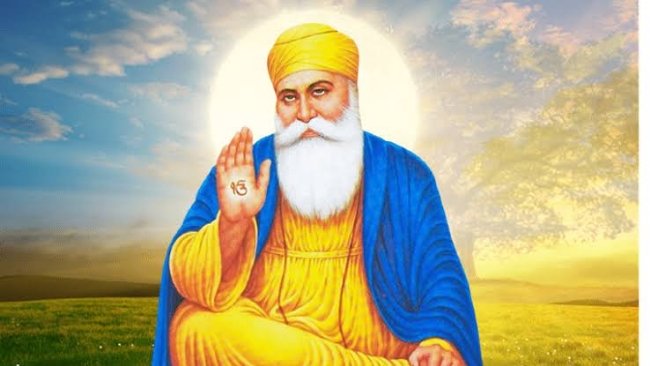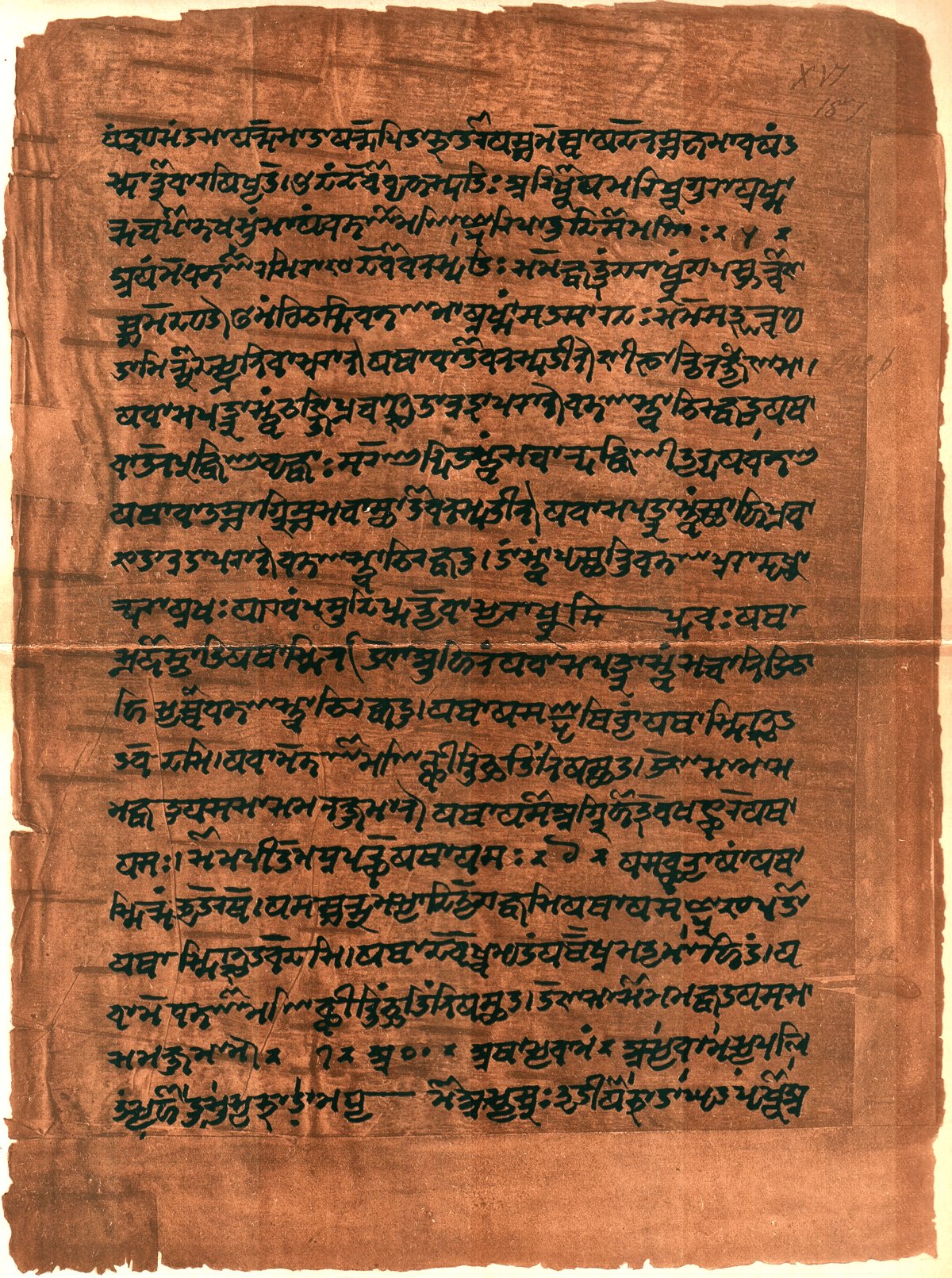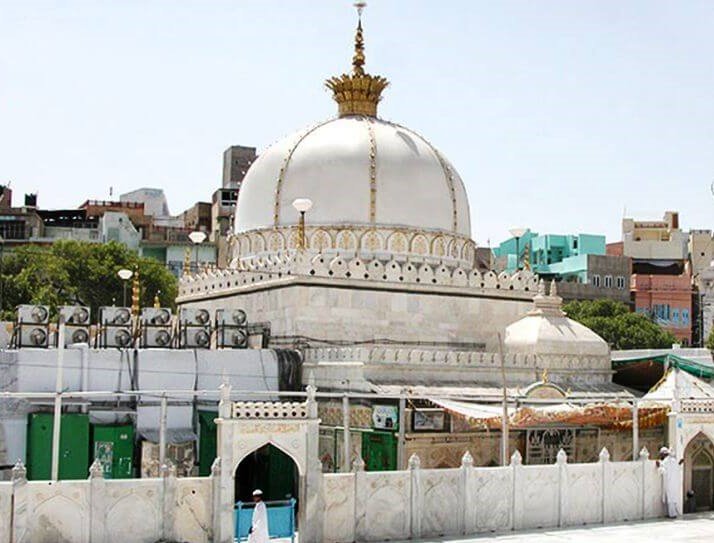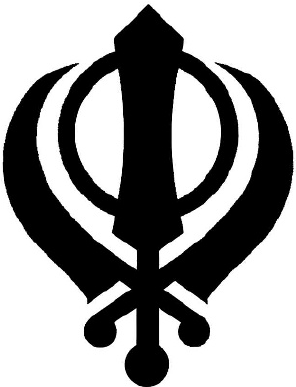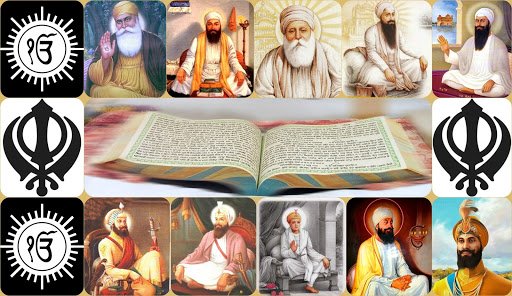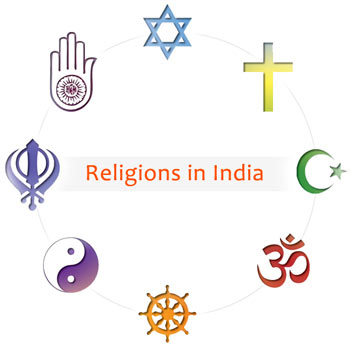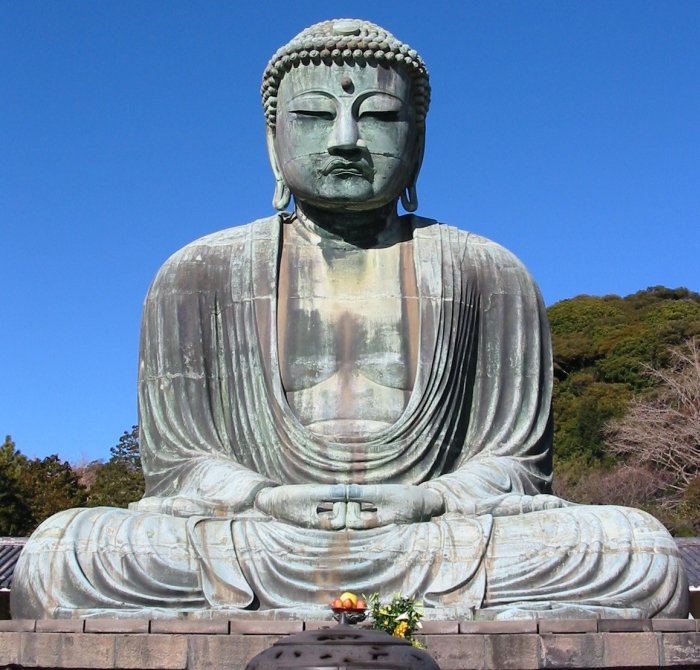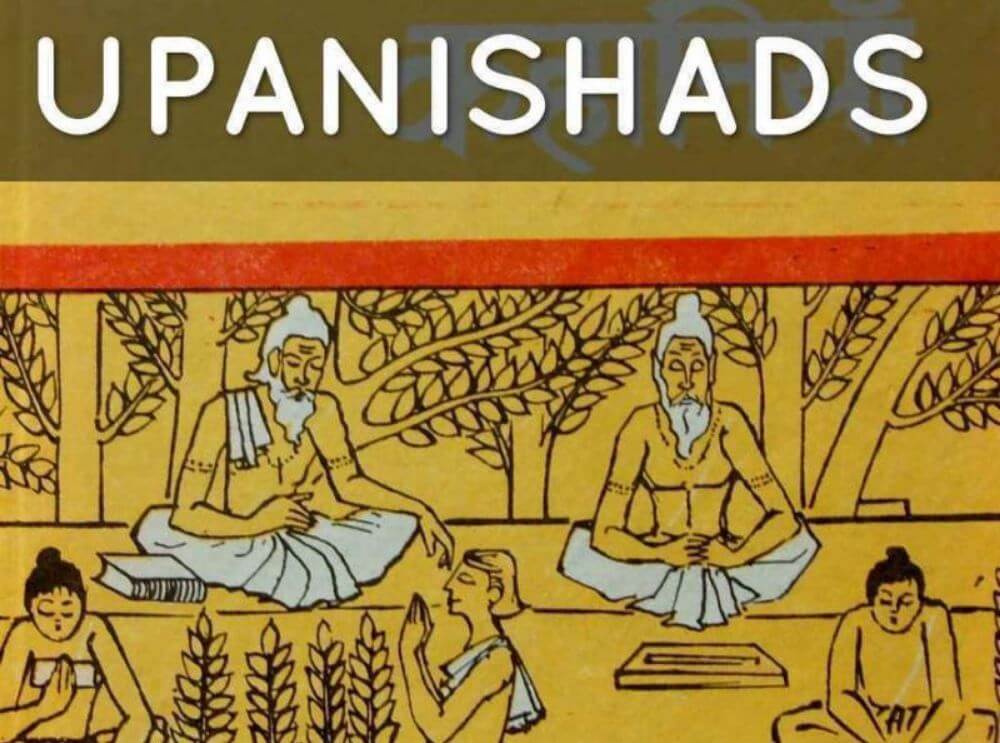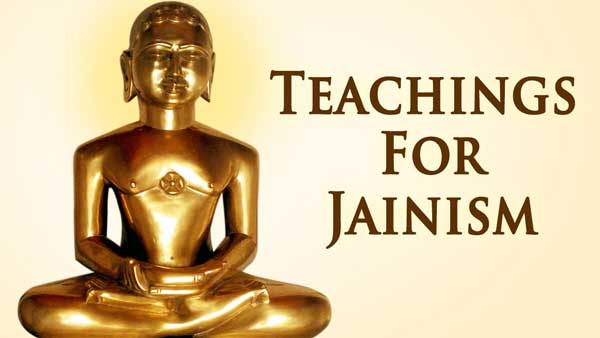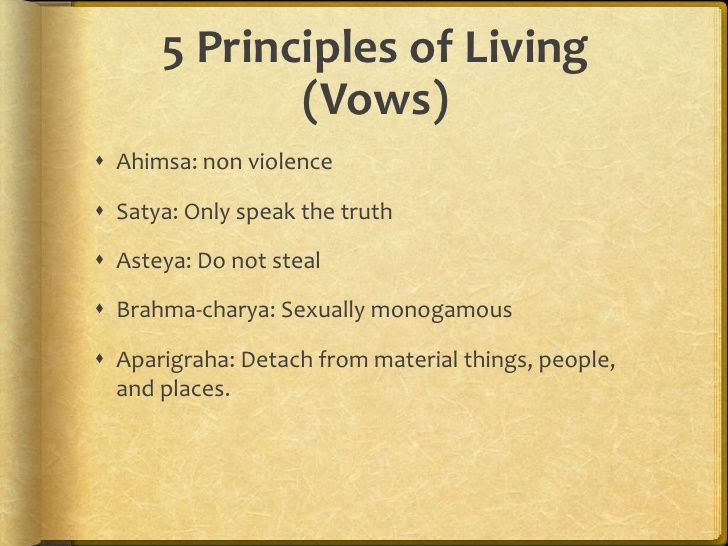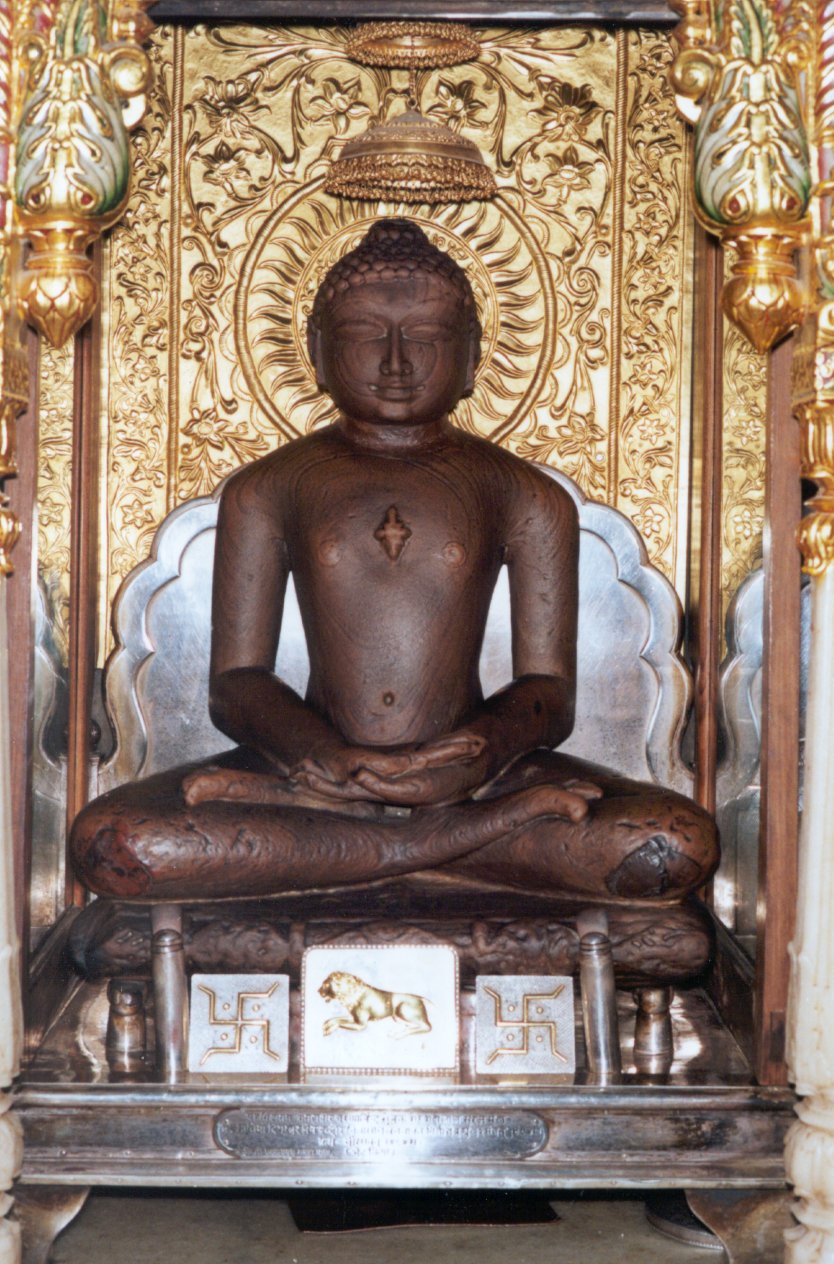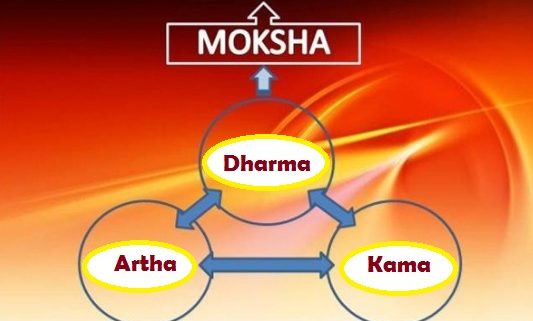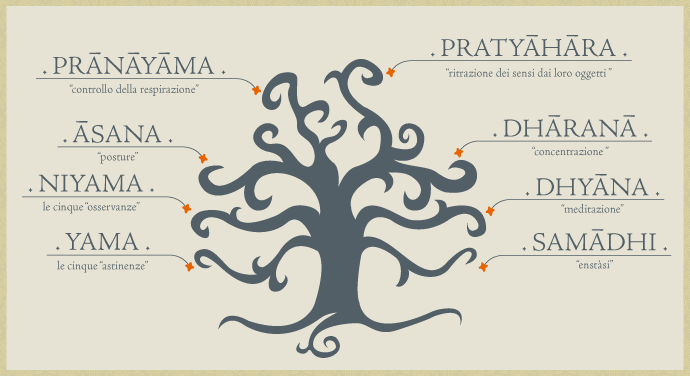- Home
- Religions in India
- Jainism
Jainism
Jainism:
Jainism is an ancient Indian religion known as Jain Dharma. The aim of Jain life is to achieve liberation of the soul. Jainism is an Indian religion that emphasizes complete non-violence and asceticism. Followers of this religion which believes in renunciation and harmlessness are called Jains, and there are about 4 million Jains worldwide. According to the philosophers of this religion people should fight against the passions and bodily senses to gain enlightenment, or omniscience and purity of soul. Jains trace their history through 24 Thirthankara. The 1stThirthankaraha was Rishabhanatha. The last two Thirthankaraha were Parshavantha (872-772B.C.) and Mahavira(599-527).
Another important religion that cropped up during the period of Hinduism and Buddhism is Jainism. It is an ancient religion from India that teaches that the way to liberation and bliss is to live a life of harmlessness and renunciation. It is believed that Jainism was present even during Indus Valley Civilisation.
The followers of Jainism believe that life exist in every soul like that of animals , plants and human beings. Accordingly every soul should be treated equally and with due respect. Jains are very strict vegetarians and even some do not eat the underground grown vegetables like potato, carrot etc. Popularly Jainism is also known as Jaina Dharma.
Jain Sects--Digambara and Svetambara
The two important sects in Jainism are Digambaras and Svetambaras. Digambaras are sky clad or naked and Svetambaras are white clad. Digambara is a combination of two Sanskrit words known as Dig (direction) and ambara means sky. The monks in Digambara are always naked and carry with them pichhi a broom made from peacock feathers, Kamandalu—a water container and Shastra (scripture). The reason behind not wearing any clothes by monks is that it leads to attachments for worldly pleasures which cause distraction and it would be difficult for the monks to follow asceticism.
A Digambara monk possesses 28 characters which are very essential for his life. The 28 characters or gunas are five vows of Jainism, Five samitis, Panchendriya nirodha (control of Five senses) Sadavasyasyakas (six essential duties like meditation, worship of Tirtankaras, vandana, Prathikramana, Prathikhayan, Kayotsarga, and seven niyamas or rules. The Digambara Jains worship nude idols of thirtankaras and siddha. The head of the monastics is called as Acharya. Some of the sub sects in Digambara are Terapanti and Bispanti. Some of the important Archaryas of Digambara include Kundakunda, Virasena, Samanthabhadra and Siddasena Divakara. Some important texts of DIgambaras include Samayasara, Pravacanasera, Satkhandagama and Kasayapahuda.
Svetambara is another important sect in Jainism. Svetambaras do not believe in nudity, they wear a white clad. However Svetambaras cover their mouth with white cloth so that no microscopic animals can also enter their mouth while talking. This is because of practice of Ahimsa from Svetambaras. The sub sects in Svetambaras include Deravasi, Sthanakavasi and Terapanth.
Even though both sects are of Jainism however there is minor difference in the practice and beliefs of both the sects. Unlike Digambaras, Svetambaras believe that women can attain moksha and mentions that the 19th tirtankara Malinath was a women.
Both sects also differ in the practice of nudity. They also differ in the birth and marriage of Mahavira. The idols worshiped by both sects also differ, Svetambaras dress up the idols of thirtankaras with Lion cloth with prominent staring eyes along with jewels while the idols of Digambaras are naked and undecorated. The eat habits of the monks also differ.
Jain texts or scriptures
Jain texts or scriptures: Jain scriptures or texts are very important to understand about Jainism and its philosophies. Jain texts are also known as Agamas. It is believed that the literature of Jainism had started from Adinatha, the first thirtankara of Jainism. The jain texts have used different languages and the earliest version of Jain Agamas were written in Parakrit language. The divine preaching’s (samavasarana) is called as Shrut Jnana and it consists of eleven angas and fourteen purvas. All the preachings were recorded by the head of the disciple known as Ganadharas. The Agamas were consisted of 46 texts which included 12 Angas, Six Chedsutras, Four Maulasutras and ten Prakirnaka. The tweleve Angas are
Acharanga sutra, Sutrakrtanga, Sthananga, Samavayanga, Vyakhyaprajinapti, Jnatrdharmakathah, Upasakadasah, ANtakrddaasah, Anuttaraupaptikadasan, Prasnavyakaranani, Vipakasruta, drstivada. Acharanga sutra is the first of the eleven Angas of the Jain texts.
The Svetambaras edited this text and are following this. The text was edited by KshamaSharman Devardhigani who was the head for the council held in 454CE. However the Digambara do not accept this text and considers the original text is lost. They follow Mulachara text which is supposedly derived from original Achargana sutra which discusses on the Digambhara monk.
The Svetambaras and Digambharas always differ in their beliefs. According to Svethambara their 45 text collection as canonical while Digambaras created a new secondary canon between 600 and 900 CE which are divided into four groups namelt History, cosmography, philosophy and ethics. This is known as four Vedas of Digambaras.
Kalpha sutra which is followed by Svetambaras is the most important texts in Jainism. Some of the important texts of both Digambaras and Svetambaras are Tattvarsutra, Samayasara, Ratnakaranda, sravakacara and Niyamasara.
Update on coronavirus in India
Jain Festivals and Temples
Jain festivals and Jain temples:
Jain festivals are usually related to the life of the Tirtankaras. Some of the main festivals celebrated by the Jains are Paryushana, Janam Kalayanak, Gyana Panchami, Pausha Dashami, Mahamasthakabisheka, Roth Teej and Shrut Panchami , Diwali. Paryushana is a very important festival for the Jains. It is celebrated in the month of August or September. Svetambaras celebrate it for eight days and Digambaras celebrate it for 10days.
Jain temples are the worshipping place for Jains. The temples are built in different architectures. There are mainly two types of temples in Jainism they are Shikar Bandhi Jain temple that is with dome and Ghar Jain temple that is a Jain house temple without a dome.
Some of the important temples and thirtha of Jains are Shravanbelagola in Karnataka, Ranakpura Jain temple in Rajasthan, Dilwara temple in Mount Abu, Vasai Jain temple in Gujurat, Shikarji temple, Ajitanath temple, Palitana temple, Akkana Basadi, Ellora Jain caves, Jal Mandir Pawapuri, Kulpakji temple in Nalagonda, Telengana, temple complex in Deogarh and many more….
Jain Principles
Jain principles: The fundamental principles in Jainism are
Ahimsa or non violence
Anekantavad or not one sided reality
Aparigriha or detatchment to worldly luxuries
Ahimsa: The most important and fundamental principle of Jainism is Ahimsa. Before we further discuss on Ahimsa in Jainism let us try to understand the meaning of Ahimsa. Ahimsa is a Sanskrit word which means non violence or not to harm any living beings which include animals, plants and human beings.
It is the most important principle or virtue in Indian religions of Hinduism, Jainism and Buddhism. Jains also strongly believe in the theory of Ahimsa. Hence Jains follow strict vegetarianism and also most of the rituals of the Jainism follow Ahimsa.
They strongly believe that the only way to protect oneself is by not harming the other soul and to protect the other soul in the world. According to Jains violence of every type is it physical or mental should not be practiced. Even thinking bad for others is also considered as violence or himsa in Jainism.
In our universe there are different categories of life like human beings, animal’s plants and even microscopic living beings like bacteria etc. According to Jain texts living beings are classified into different categories based on their senses. The five senses are touch, sight, hear, smell and taste.
The main sense organs for these are skin, eye, nose, tongue and ear. The Jain scripture like the Tattvartha sutra written by Acharya Umaswati mentions that violence done on higher sense beings like animals, human beings attracts more Karma than violence on less sense beings.
Anekantavad: Anekantavad consists of two Sanskrit words anekanta and vada. Aneka means many, Anekantavada literally manes many sides or not one sidedness. The origin of Anekantavad can be traced to Mahavira the 24th Thirtankara.
According to this doctrine truth and reality should be seen from different point of view and not from a single point. It is understood that reality in general can be experienced but probably not possible to express it in any language. According to Mahavira truth can be experienced but cannot be expressed in any language.
One can only feel or experience the truth but not possible to express it in language. Language is not truth. Jain doctrine lays great importance on the logic and reasoning. In this Jains came out with three philosophy namely
Syavada—theory of conditioned predication
Nayavada – theory of viewpoint
Jiva—changing soul
Aparigraha: This is the third main and important principle of Jainism. It means detaching from all the worldly luxuries. According to Jainism accumulating worldly pleasures lead to greed, jealously, anger and selfishness. Detaching from the sensual pleasures and worldly luxuries is a road for liberation.
According to Jain philosophy a nun or a monk of Jainism should detach himself or herself from all the emotions of family and worldly affairs. They should be homeless. The Jain texts mentions two kinds of attachments like internal and external attachment. Internal includes anger, greed; deceitfulness and pride along with this some other attachments are passion for sexes, laughter, sorrow and fear.
Jain practices
Jainism Practices: The fundamental and the most important aim of Jainism are for perfect soul. In this Jainism follows asceticism strictly. Asceticism means following severe self discipline. It is the renunciation of all the worldly pleasures both physical and material pleasures. Asceticism is an important concept in all religions like Buddhism, Hinduism, Christianity and Judaism. Islam observes asceticism in the form of fasting during the holy period of Ramadan.
Jainism follows asceticism in a more strict way. They even discard wearing clothes by remaining naked, closing the mouth with a napkin, fasting, abstaining from tasty foods, not eating any vegetable grown underground, penance and other austerity method. The main and the ultimate aim in Jainism is liberation of soul and attain moksha (liberation from the cycle of birth and death).
It is also believed in Jainism and other religions in India that following asceticism will help in purifying the body thus purifying the soul thus helping to get greater connection to divine. Jain monks and nuns walk bare foot and even sleep on the floor. They keep travelling to different places by preaching the Jain principles.
Jain texts such as tattavartha sutra and Uttaradyayana sutra give more information on asceticism. These texts discuss six inner and outer practices that are most common and important to achieve asceticism in life. Another important text known as Kalpasutra describe Mahavira asceticism in life.
Jainism practice strict vegetarian diet without eating root vegetables. Fasting is an important practice followed by Jainism. Fasting means abstaining from the consumption of food or any liquid for certain period of time. Fasting is done during festival period or on any other important occasion.
There are many types of fasting in Jainism. The two sects follow slightly different methods in fasting. In Digambara sect fasting for Dasa laksana parvan (holy festival for Jains celebrated in the month of August or September). in which a Jain person does fasting by eating only one meal or two meal per day or drinking only boiled water for 10days or fasting completely on the first and the last day of the festival.
Similarly fasting is done in Svetambara during Paryushana (holy festival for Jains celebrated in the month of August or September). If the fasting is done on all eight days during Paryushana then it is called as Atthai. They are:
Upavas: Fasting for the whole day without food.
Chauvihar: No food or water is consumed after the sunset. Many Jains follow this practice daily.
Vruti Sankshep: Limiting the items of the food to consume.
Rasa Parityag: Detaching from your favourite food.
Tivihar Upvas: No food is consumed only boiled water is allowed
Meditation is another important practice which most of the Jains follow. Meditation also known as Dhyana is the process of trying to keep mind on single topic thereby preventing mind from wandering.
Jain meditation is also known Samayika and it is divided into two categories Dharma Dhyana that is auspicious Dharma and Artta Dharma that is inauspicious meditation. The best part of meditation is that it purifies mind, body and soul. It also helps in attaining self discipline in life. Samayika is usually practiced three times in a day .
Affiliate Disclosure:
If you make any purchase via a link on this site, I may receive a small commission with no added cost to you.
